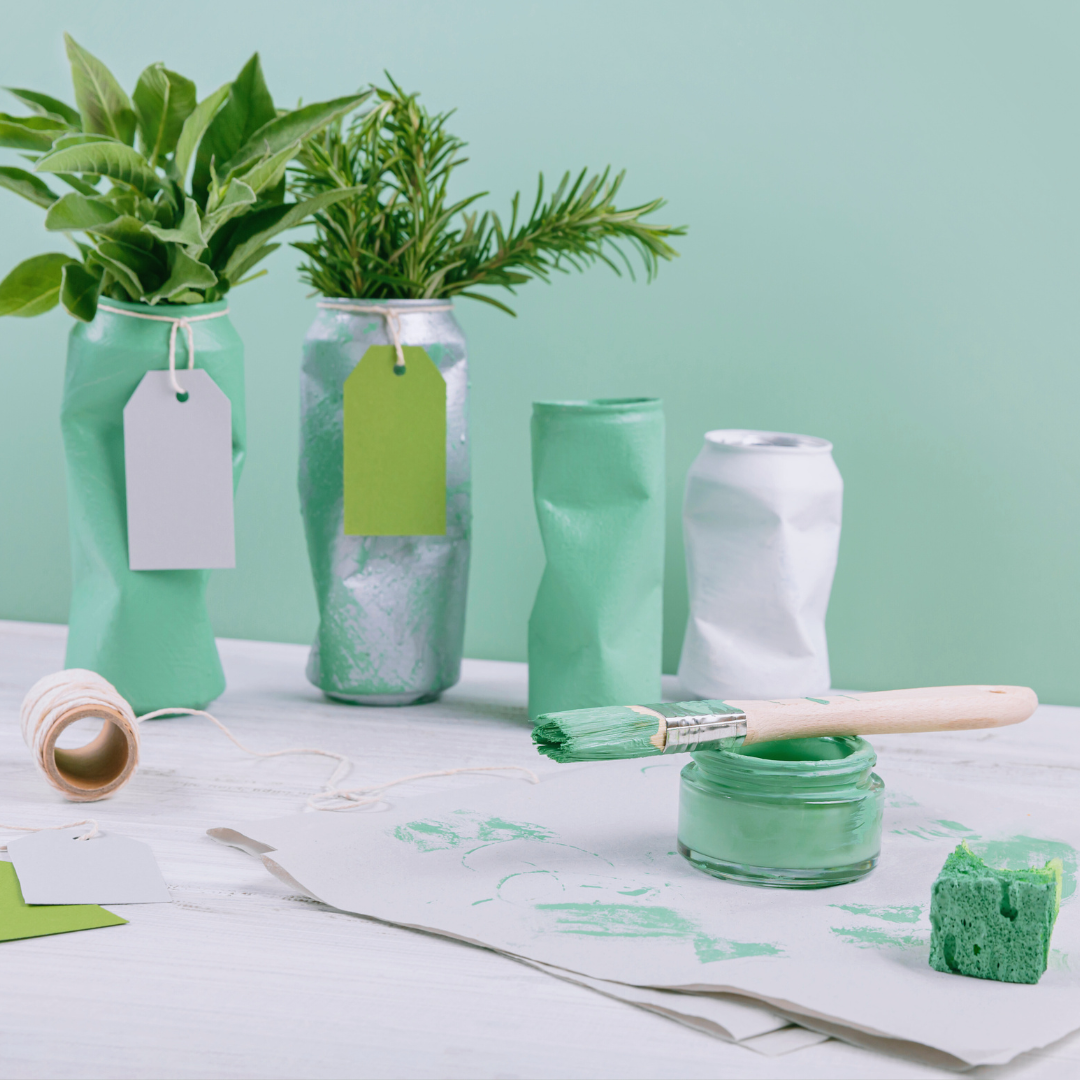Old home decor often holds sentimental value, but can also accumulate dust in storage. Individuals looking to refresh their living space can find joy and creativity in upcycling these items. Exploring innovative ways to repurpose outdated decor not only reduces waste but also adds unique character to a home.
From transforming wooden pallets into stylish furniture to turning glass jars into chic storage solutions, the possibilities are vast. People can breathe new life into old pieces with a bit of imagination and effort. Upcycling offers a sustainable approach to home decor that benefits both the environment and personal style.
Embracing these creative projects allows for customization that store-bought items may lack. By following some simple tips and techniques, anyone can unlock the hidden potential in their forgotten decor. Finding inspiration in what already exists can lead to stunning results and a rewarding experience.
Understanding Upcycling in Home Decor
Upcycling offers creative opportunities for transforming old home decor into functional and aesthetically pleasing items. By repurposing, individuals can breathe new life into forgotten pieces and contribute to sustainability.
Benefits of Repurposing Old Home Decor
Repurposing old home decor has multiple benefits. First, it reduces waste by keeping items out of landfills. This practice conserves resources and minimizes environmental impact.
Additionally, upcycled decor provides a unique charm to any space. Each piece tells a story, reflecting individuality and personal taste. It allows homeowners to showcase creativity in ways that new, mass-produced items cannot.
Cost savings are another advantage. Creating decor from old or unused items can be much cheaper than purchasing new accessories. This makes effective use of existing resources while achieving stylish results.
Choosing the Right Items for Upcycling
Selecting items for upcycling is crucial for successful projects. Common candidates include wooden furniture, jars, and fabric remnants. These materials can often be transformed with minimal effort.
Homeowners should look for items that have good structural integrity or an appealing aesthetic. Choosing pieces with distinctive shapes or textures can enhance the overall look of the final product.
Consider the intended use of the upcycled items. For example, a wooden crate can become a stylish bookshelf, while glass jars might serve as unique planters. The possibilities are extensive, limited only by creativity and resource availability.
Essential Tools and Materials
When it comes to upcycling, having the right tools is essential. Basic tools include a saw, hammer, paintbrushes, and adhesive. These can aid in crafting and assembling projects.
Materials also play an important role. Paint, fabric, and varnish can transform a piece, while hardware like knobs and hinges enhance functionality.
It is beneficial to have a selection of supplies on hand, such as sandpaper for smoothing surfaces and various paints for applying color. Keeping items organized will streamline the upcycling process and encourage experimentation.
Creative Techniques for Upcycling
Upcycling old home decor can breathe new life into forgotten items. Creative techniques engage both practical skills and artistic vision, allowing for unique transformations. Below are effective methods to implement.
Painting and Decorative Finishes
Painting is among the simplest and most impactful techniques for upcycling. A fresh coat of paint can revive old furniture and accessories. Choosing the right paint type is crucial; chalk paint offers a matte finish, while spray paint provides a smooth, glossy look.
Using stencils can create patterns and designs that enhance aesthetics. Metallic finishes can add a touch of elegance, especially for vintage items. Moreover, various techniques such as distressing or sponge painting provide texture and character.
When selecting colors, consider the room’s existing palette to ensure cohesion. Ultimately, paint not only revitalizes decor but also allows for personalization.
Reimagining Furniture Pieces
Reimagining furniture involves altering the functionality or appearance of items to serve new purposes. For example, an old ladder can become a bookshelf, providing a rustic charm.
Another idea is to transform a coffee table into a bench with some basic carpentry skills. Adding new hardware can also modernize dated furniture. Shedding old upholstery and replacing it with trendy fabric will reinvigorate chairs or sofas.
Moreover, incorporating different finishes, like a distressed look or a bright lacquer, can change the entire feel. Making these adjustments can lead to unique statement pieces that reflect individual style.
Transforming Textiles and Fabrics
Textiles provide great potential for upcycling projects. Old curtains can be repurposed into pillow covers, table runners, or even tote bags.
Besides sewing, fabric painting, or tie-dyeing can completely change the look of worn-out materials. Consider using iron-on patches for quick repairs and design enhancements on clothing or linens.
Additionally, quilt making from old T-shirts preserves memories while creating functional art. This approach not only reduces waste but enables creativity through innovative fabric combinations. Upcycling textiles can yield beautiful and useful items, transforming homes in unexpected ways.
Inspiring Projects from Thrift Store Finds
Thrift stores offer a treasure trove of unique items perfect for creative upcycling projects. From old frames to vintage lamps, these finds can transform a home decor setting into something special.
Wall Art from Unused Frames
Unused frames can effortlessly become striking wall art. Start by selecting frames in various sizes and styles. Removing mirrors or old photos leaves blank canvases ready for creativity.
Ideas for customization:
- Paint: A fresh coat in bold colors or a soft pastel can give a vintage feel.
- Fabric: Cover mats with interesting textiles for texture.
- Display: Create a gallery wall by arranging multiple frames in an asymmetrical layout.
This approach provides a personalized touch and enhances the aesthetic of any room.
Lighting Solutions with Vintage Materials
Vintage materials found at thrift stores can easily be repurposed into stunning lighting fixtures. Old lampshades, light fixtures, or even bottles can become eye-catching sources of light.
Transformation steps:
- Refurbish: Clean and paint the base of a vintage lamp.
- Shade Replacement: Swap dated shades for modern, colorful fabric or lace options.
- New Combinations: Combine different parts, like a unique base with a simple shade, to create a distinctive look.
These projects add character while maintaining functionality.
Storage and Organization Ideas
Thrift store finds can significantly enhance storage and organization. Items like wooden crates, jars, and baskets offer creative solutions for decluttering.
Practical applications:
- Repurposed Crates: Use wooden crates as open shelves for books or decorative items.
- Glass Jars: Transform jars into stylish containers for small items.
- Baskets: Store blankets or toys neatly while adding to the decor.
This method ensures simplicity while integrating useful and attractive organizational solutions into the home.
Maintaining and Showcasing Upcycled Decor
To keep upcycled home decor looking fresh and stylish, it’s essential to care for each piece properly. Additionally, showcasing these items in a cohesive manner enhances the overall aesthetic of a space.
Caring for Revamped Pieces
Upcycled decor requires specific care depending on the materials used. For wooden items, a gentle dusting with a soft cloth helps maintain the finish. If painted, using a mild soap solution can clean surfaces without damaging the paint.
For fabric-based decor, spot cleaning is advisable. Avoid harsh chemicals that may fade colors or damage fibers. For metal pieces, regular polishing can prevent rust and maintain shine.
Frequent inspections for damage are vital. If a piece shows wear, immediate repairs can prolong its life. A little attention can ensure upcycled decor remains a beautiful feature in any home.
Styling Tips for a Cohesive Look
Integrating upcycled decor into a space should feel intentional. One way to achieve this is by using a consistent color palette across items. For instance, if several pieces are in muted earth tones, they can seamlessly blend together.
Grouping similar styles works well. Items that share design elements, such as vintage or modern, create visual harmony. Using varying heights and shapes in displays adds interest and depth.
Open shelves or wall displays are excellent for showcasing several upcycled pieces together. Arranging items in odd numbers often feels more natural to the eye. This thoughtful styling creates a curated look, enhancing the home’s decor aesthetic.

